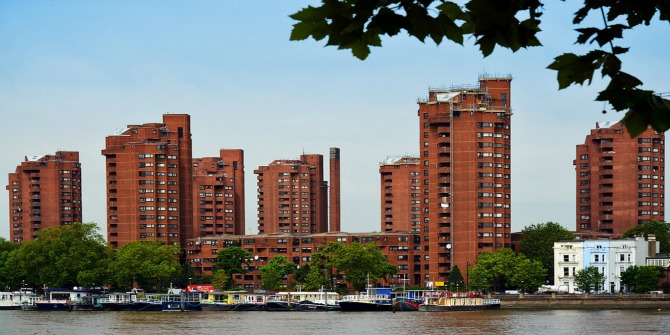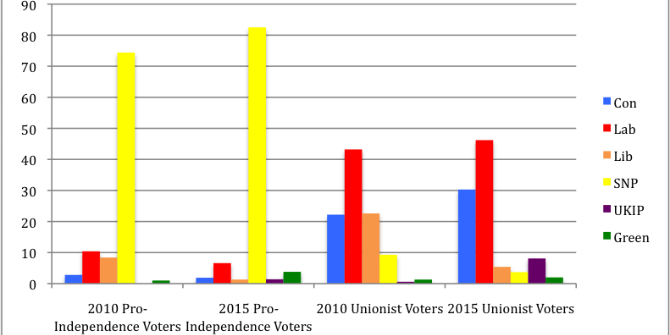 Through his first spring budget, the new Chancellor demonstrated that he understands the UK’s biggest problems and outlined how we can achieve a better economy. But he has not yet fully acted on those insights, writes Carsten Jung.
Through his first spring budget, the new Chancellor demonstrated that he understands the UK’s biggest problems and outlined how we can achieve a better economy. But he has not yet fully acted on those insights, writes Carsten Jung.
In Wednesday’s budget speech, Rishi Sunak showed that he gets it. He showed that he gets the COVID-19 crisis, he gets the investment shortage and he gets the hole in public services. But lamentably, despite promising to ‘get it done’ 19 times in his speech, Sunak is not actually fully delivering on these issues.
First, on COVID-19, the Chancellor made clear that he has learned from the mistakes of the last financial crisis. In a situation where the economy – firms, banks, workers, the state – all experience a simultaneous hit, the treasury needs to do whatever it takes to stem a recession. He made significant commitments to financially support businesses with lost demand and made sick pay more accessible. The economic commitments made are broadly in line with those of Italy and South Korea.
However, his approach is too lopsided to be fully effective. The response focusses mainly on firms and leaves many workers with little to no protection. For instance, many of the UK’s self-employed who do not qualify for universal credit will remain without support. Those on low incomes may have to make do with only a third of their usual income. Ireland, in comparison, has just increased its sick pay by 50%. The low level of support for workers in the face of COVID-19 comes at a time when one in seven people are already just about keeping up with bills or have already fallen behind with payments. This means that the support for many workers might simply not be enough to prevent them falling into financial distress if the economic situation gets worse.
Second, Sunak has understood the power of public investment in a world of low growth, also known as ‘secular stagnation’. Many economists have been arguing for years that governments are investing too little. This was true especially in the UK, where the public investment rate fell well below similar wealthy countries. As a result, UK growth remains lacklustre, economic gains are unequally shared and long-term climate targets seem out of reach, all whilst crucial public infrastructure has been allowed to decay. In speech after speech finance ministers – including British ones – praised the imminent arrival a tech-driven, shared-prosperity, low-carbon economy, but they did virtually nothing to make it happen.
Sunak has understood this. This week he announced a significant boost in public investment, which is now catching up to the advanced economy average of about 3% of GDP. But this makes the UK hardly a leader in public investment. The 3% limit on public investment is arbitrary; especially given the amount of potentially high-value investment opportunities in areas such as the transition to a green economy. IPPR estimates that Mr Sunak committed less than half of the public investment that would be needed to deliver the net zero emissions by 2050 target. Likewise, far too little investment has been committed to investment in the ‘social infrastructure’ – care, skills and social security – that would be needed to truly level up Britain’s ‘left behind’ regions.
Thirdly, the chancellor made clear that he gets the dire need for better quality public services. He said the Conservatives ‘are now the party of public services’. Indeed, the budget has delivered a large increase in spending. The focus on the NHS – especially in face of the spread of the coronavirus crisis – deserves praise. Yet, outside the NHS, public services are urgently in need of funding, but no significant increase in spending was announced. Housing and communities as well as transport departments will continue to struggle with less than half of the day-to-day funding they had before the last crisis. The poorest fifth of Britons are still faced with 30% less income in real terms than they were in 2010 thanks to welfare cuts. Austerity. is. not. over.
The Chancellor knows full well how this could be addressed: to reverse austerity across all departments about £47 billion of additional revenue would have to be raised, the equivalent to less than 2% of GDP. Some highly reasonable measures that could pay for this were floated by the government ahead of the budget, such as reversing wealth tax breaks that mostly benefit the rich. If all tax break reversals that were floated ahead of the budget were indeed reversed, then almost £30 billion of annual revenue could be raised. Combined with modest capital gains tax reforms, such as those proposed by IPPR, the funding gap could be closed and high-quality public services could be restored.
The 2020 spring budget shows that Sunak has understood the problems of this country. He has outlined what it takes to address the economic fallout from the COVID-19 crisis, has started to close the public investment gap and he has begun to restore public services. But he has not yet fully acted on these insights. He has broken new intellectual ground, outlining how we can achieve a better economy, but this budget does not get it done.
________________
 Carsten Jung is a Senior Economist at IPPR.
Carsten Jung is a Senior Economist at IPPR.
All articles posted on this blog give the views of the author(s), and not the position of LSE British Politics and Policy, nor of the London School of Economics and Political Science. Featured image credit: Steve Smith on Unsplash.








If businesses cannot support a month of closures and shutting down, surely our economy cannot be as robust as the politicians lead us to believe!